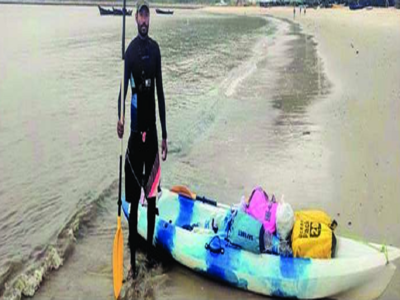Microbe groups found in the soil, the gut, the tongue and many other places show many behavioural properties that are not clearly understood such as the reason for their diversity and stability. All microbial populations are not exactly alike, there are ‘core’ species which are always present in different samples and some ‘peripheral’ species which are seen only in some samples. A study published recently in the journal Physical Review Letters attempts to explain these features using a simple mathematical model.
There are many puzzles about the behaviour of microbes such as bacteria and archaea (which don’t have a membrane-bound nucleus). For instance, a naturally occurring microbial ecosystem seen in soils, wastewater or even the human gut consists of hundreds or even thousands of species coexisting stably within a small, microscopic area. Given that the food sources are relatively few, and that the microbes tend to grow in number exponentially, how is it that they do not destroy each other in their competition for survival? How does the ecosystem maintain its diversity of microbiota? This is known as the paradox of the plankton. This and the related questions are addressed in this model. Here, apart from existing sources of nutrition, secretions given off by one species of bacteria form the nutrition for other species of bacteria.
Akshit Goyal, a PhD student at the National Centre for Biological Sciences, Bengaluru, is the first author of the paper. He refers to the fact that there are a small number of species that are ‘core’ and many that were ‘peripheral’. While there are large numbers of bacteria of the peripheral and core species, there were few showing an intermediate degree of prevalence. “Hardly any species falls in between,” he adds. When the prevalence of species is plotted as a graph, it therefore gives rise to a U-shaped distribution. “Many microbial ecosystems show the same [U-shaped] pattern,” he says.
Food supply model
When microbes use resource molecules as food, they usually cannot convert them completely to energy — there’s always some waste which form the by-products. “These by-products can sometimes be used as a food source by another species,” says Goyal. Thus the waste given out by a core species becomes the food for a peripheral species. This can lead to increase in diversity. Goyal has done this work in collaboration with Sergei Maslow of University of Illinois, Urbana-Champaign, in the U.S.
The key finding of the study is regarding the existence of core and peripheral species and that such a simple model of the underlying process can explain this. Further the authors talk about the displacement of one species by another under conditions and when they share the propensity to consume the same resource, such a displacement is termed extinction.
Mukund Thattai, cell biologist from NCBS who was not involved in this research says, “A nice feature of this idea is that things which can be measured in a snapshot, for example, human tongue microbiome diversity, could potentially be explained by an ongoing evolutionary process.” Referring to other work on this problem, he adds, “Of course, this is only one of several theories that have been put forward to address the diversity question… The key to discriminating between these ideas would be to not rely on a snapshot, but to actually watch the diversity of a microbiome change over time,” says Prof. Thattai.
For example, the authors of this paper predict a certain rate at which large numbers of species would go extinct. “Such things are, given current technologies, measurable in principle and would go a long way to clarifying how diversity really arises in nature [in this context],” he adds.
source: http://www.thehindu.com / The Hindu / Home> Science / by Shubashree Desikan / April 14th, 2018









